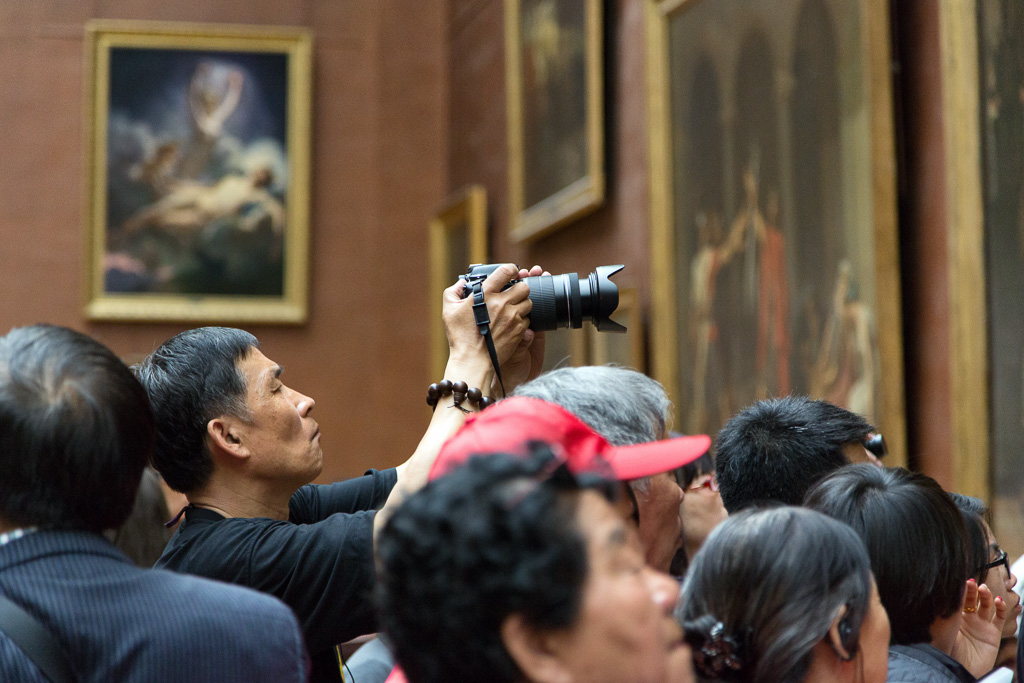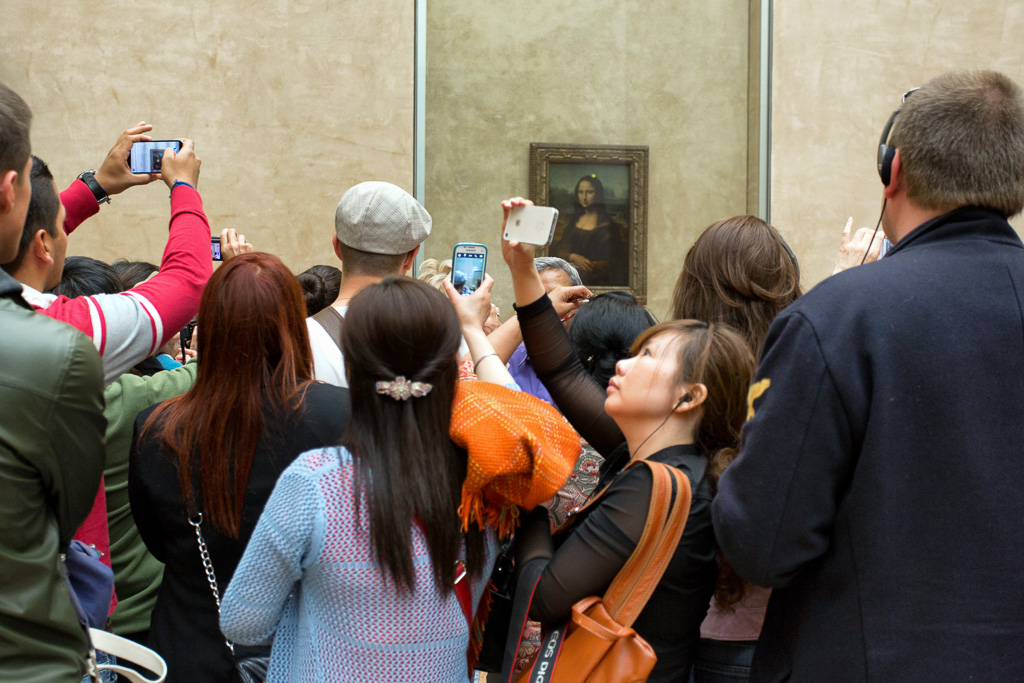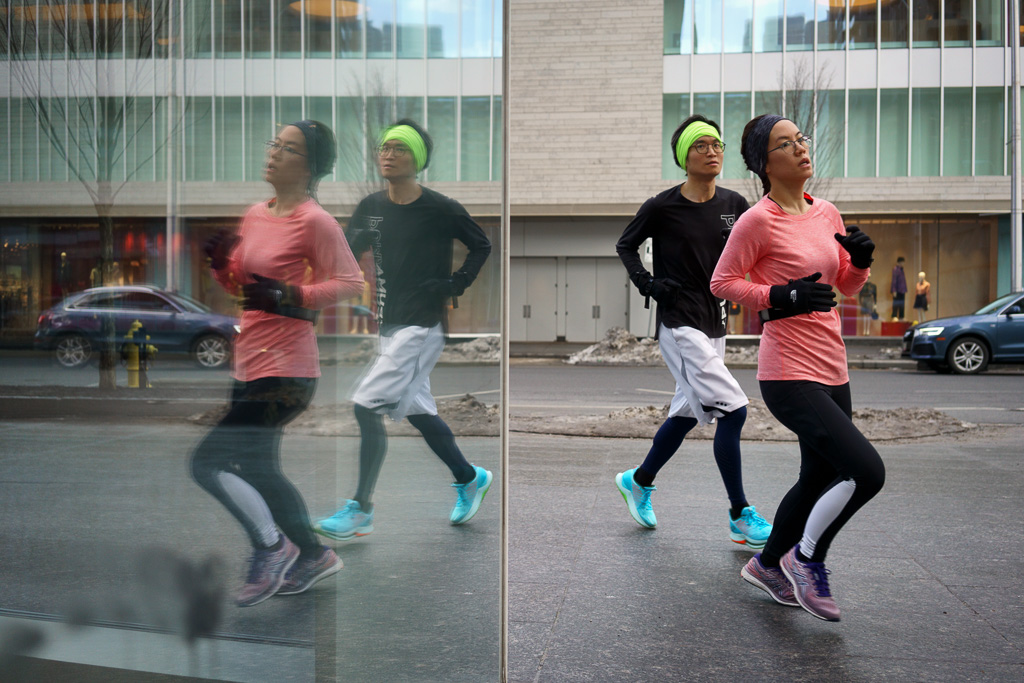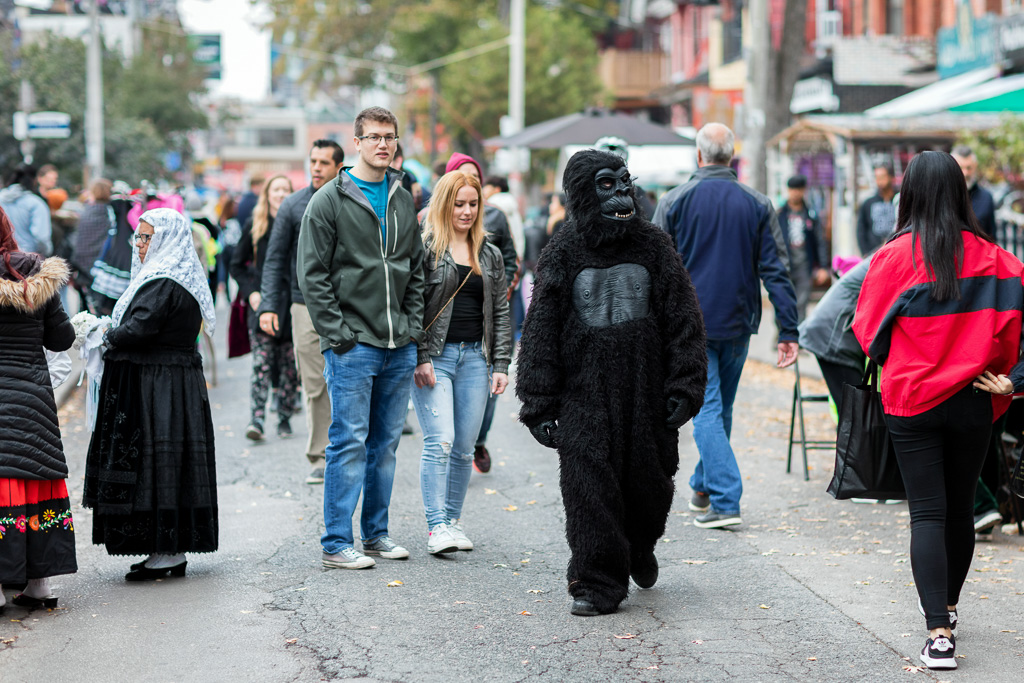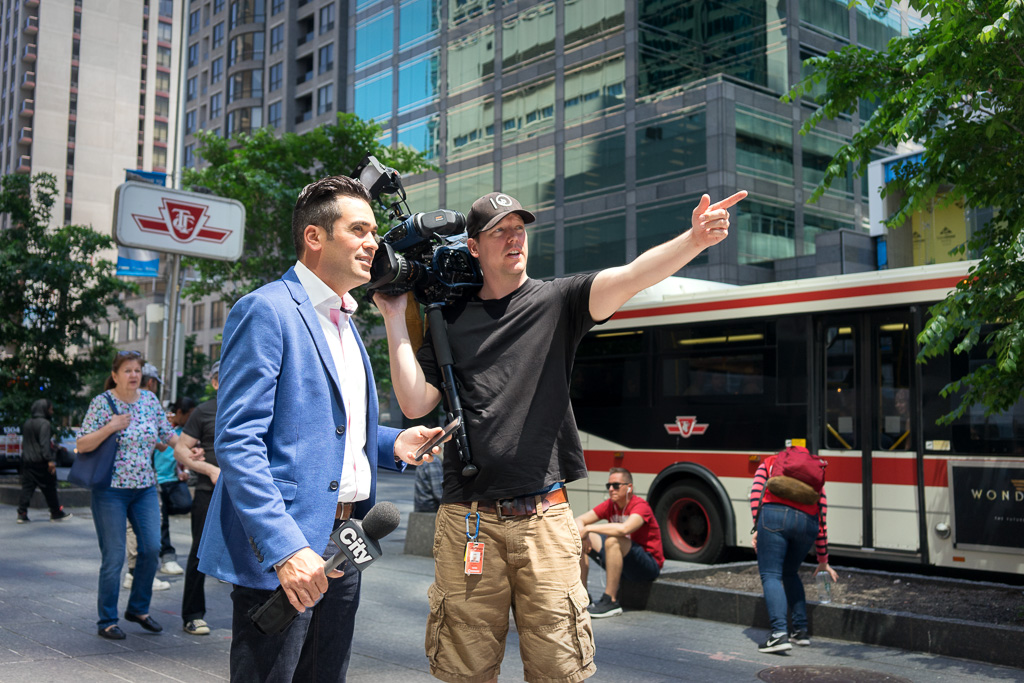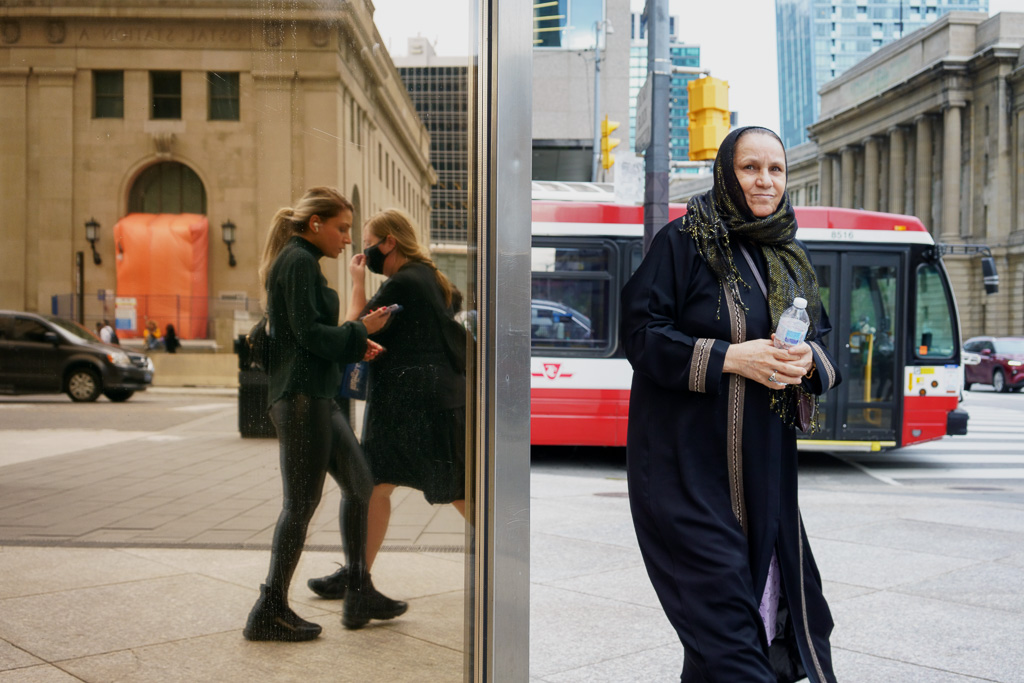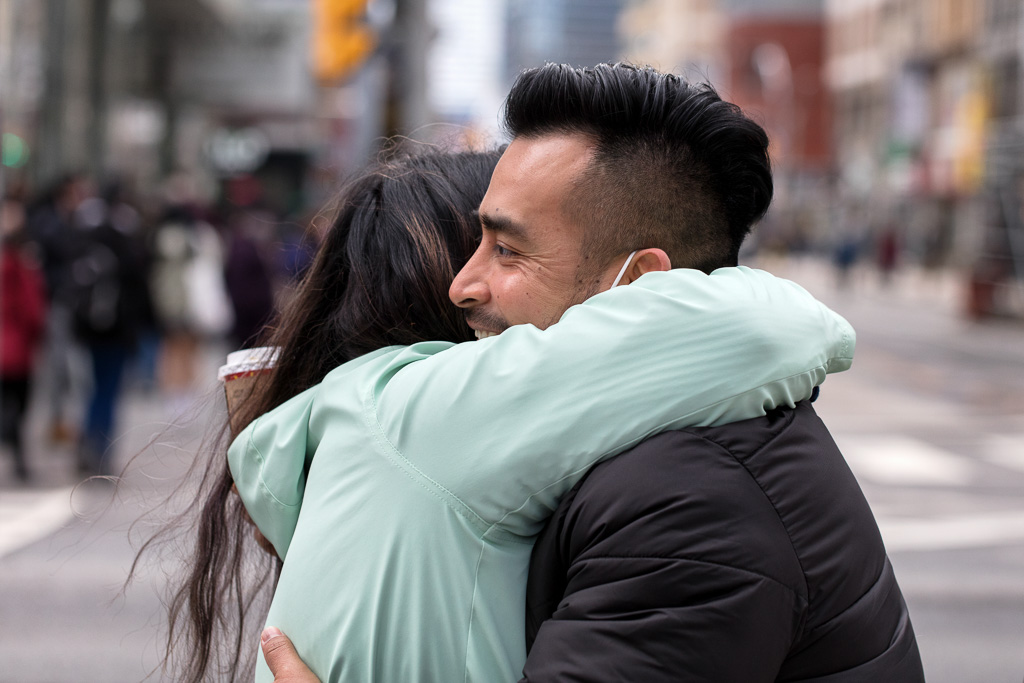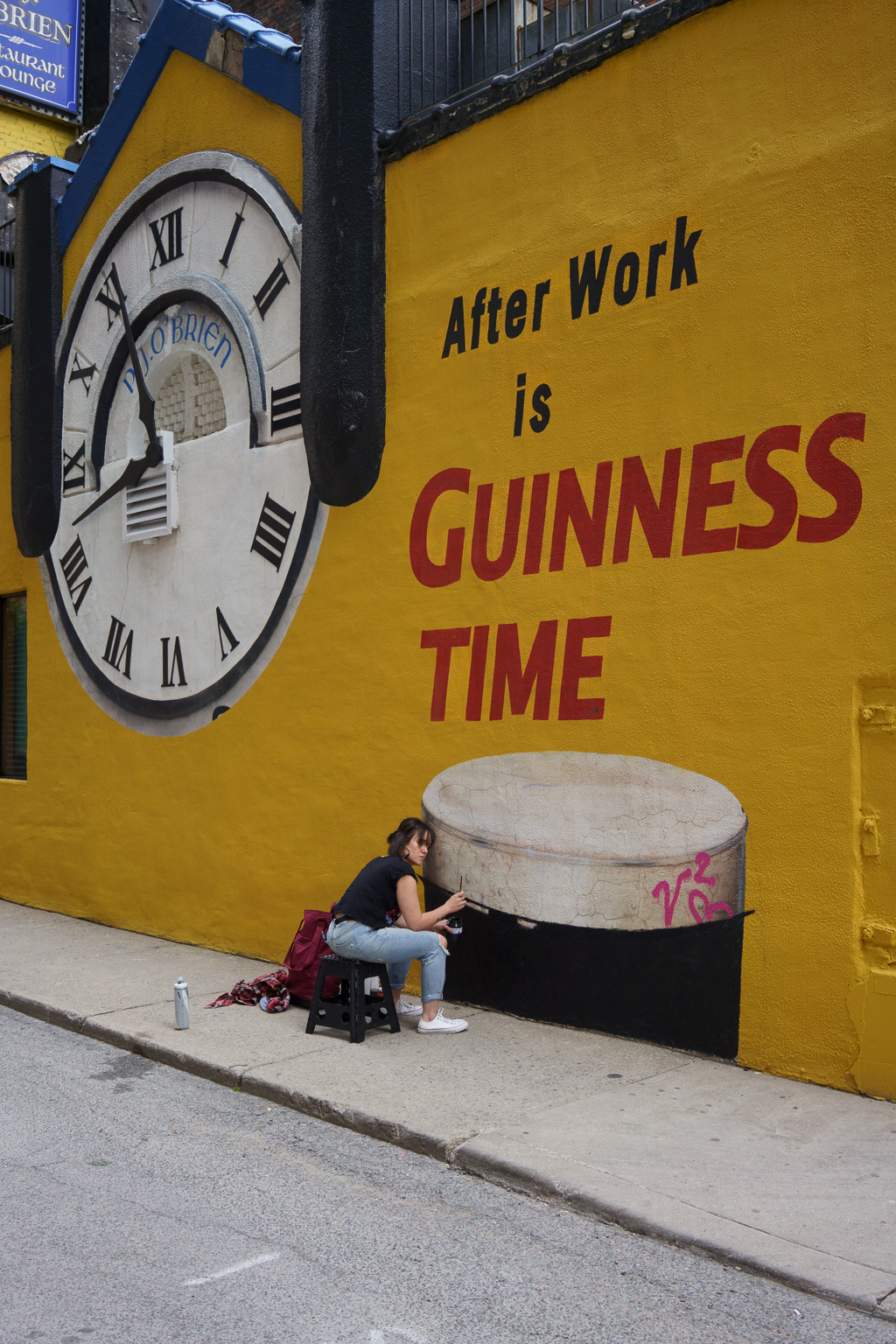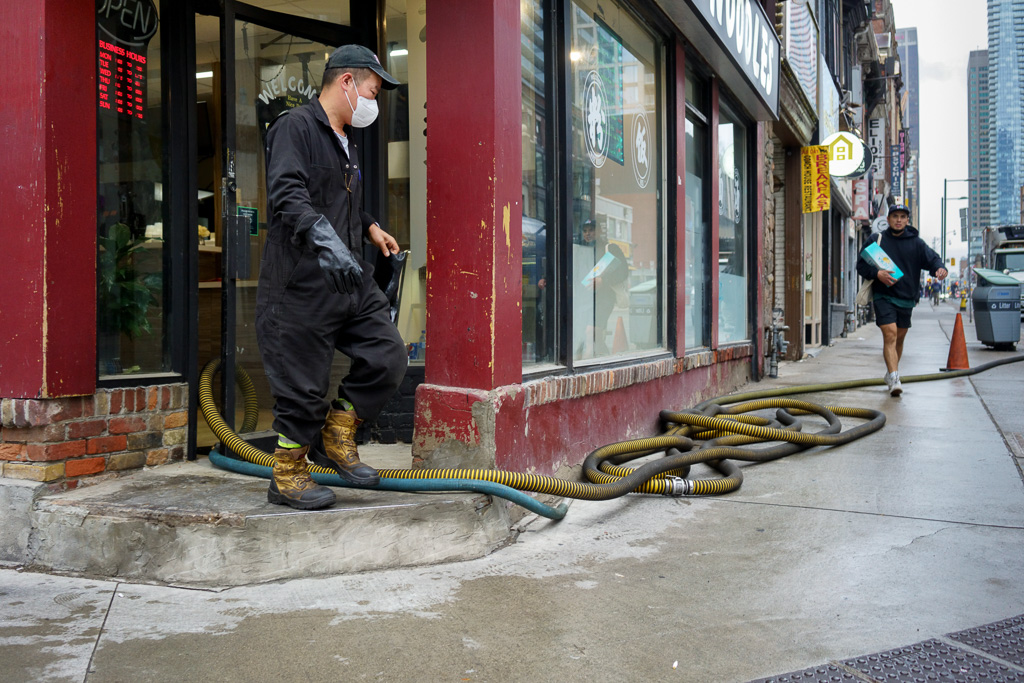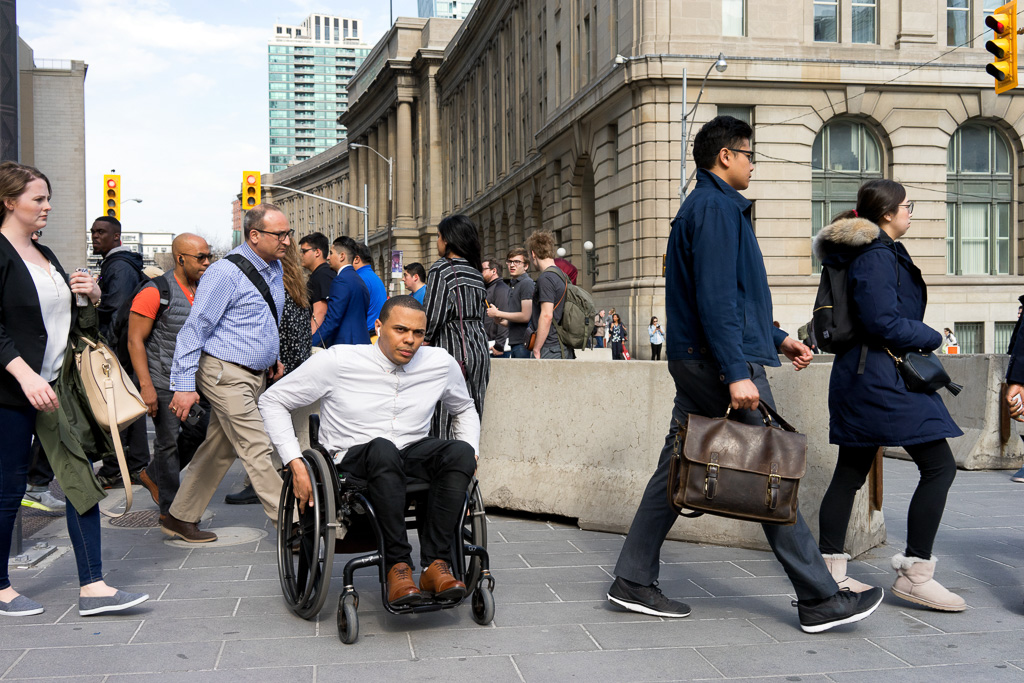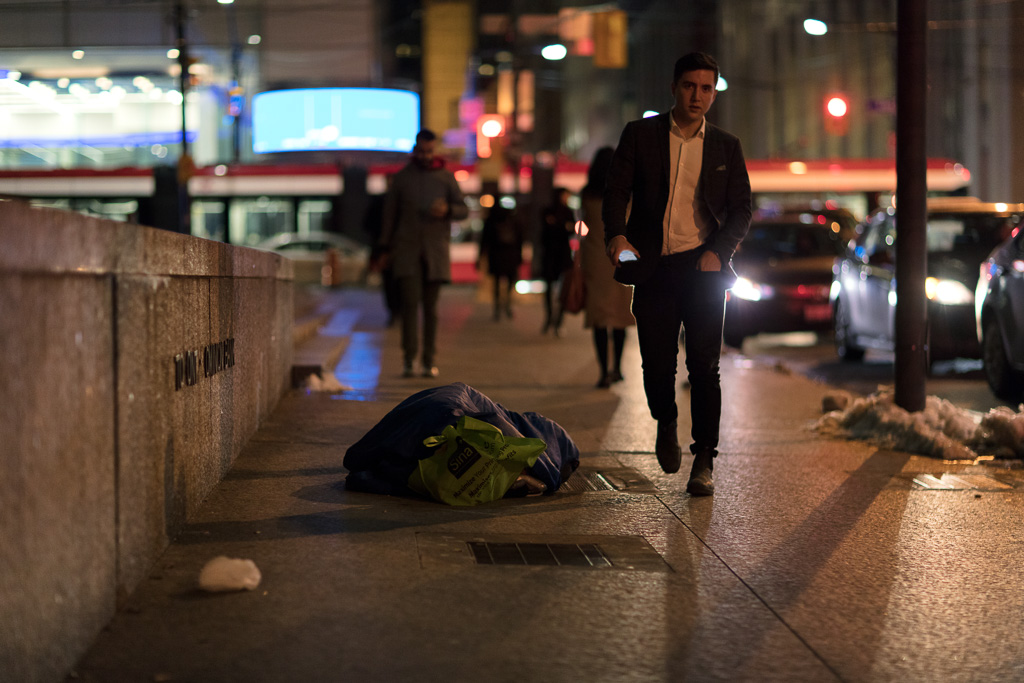This is the final post in a series of candid photos that ushered us through the month of April. This is by no means the last word on the matter given that the possibilities for candid photography are as varied and as interesting as the people on this planet.
As I see it, there are only two circumstances in which I run out of candid photos. The unlikely circumstance is that the government passes legislation prohibiting this kind of photography. At least in Canada, this is improbable because the ability to photograph in public is intimately tied to constitutionally protected conduct. One day, we might become the creatures of an authoritarian regime that doesn’t feel constrained by constitutional principles. Trump could get re-elected and decide, like his buddy Putin, to invade a neighbouring country. But until such a day arrives, I view the opportunities for candid photography as limitless.
The more likely circumstance that could put an end to my candid shooting is that deep fakes become so widespread they render photography meaningless. I see that a year old video of Bill Gates sporting breast implants has retrended on Twitter. Snopes declares that the video is digitally altered, but debunking it isn’t enough to make it go away. Like the boy who cried wolf, the more unreliable our digital ecosystem becomes in its documentation of the real world, the less likely we are to believe anything is true.
As people assume digital manipulation as their default approach to online images, those like me who make such images will move on to other kinds of image making. Maybe we’ll manufacture backdrops for dystopian sci-fi virtual reality games. Or we’ll produce animal porn. But it’s a losing game. In time, even these specialized areas will be taken over by AI image-making engines.
Eventually, we old-school documentary photographers will grow old and tell tall tales of the amazing and improbable things we’ve seen. No one will believe us, of course. Anything we’ve seen, AI can do better. So we’ll drink ourselves into oblivion instead.



